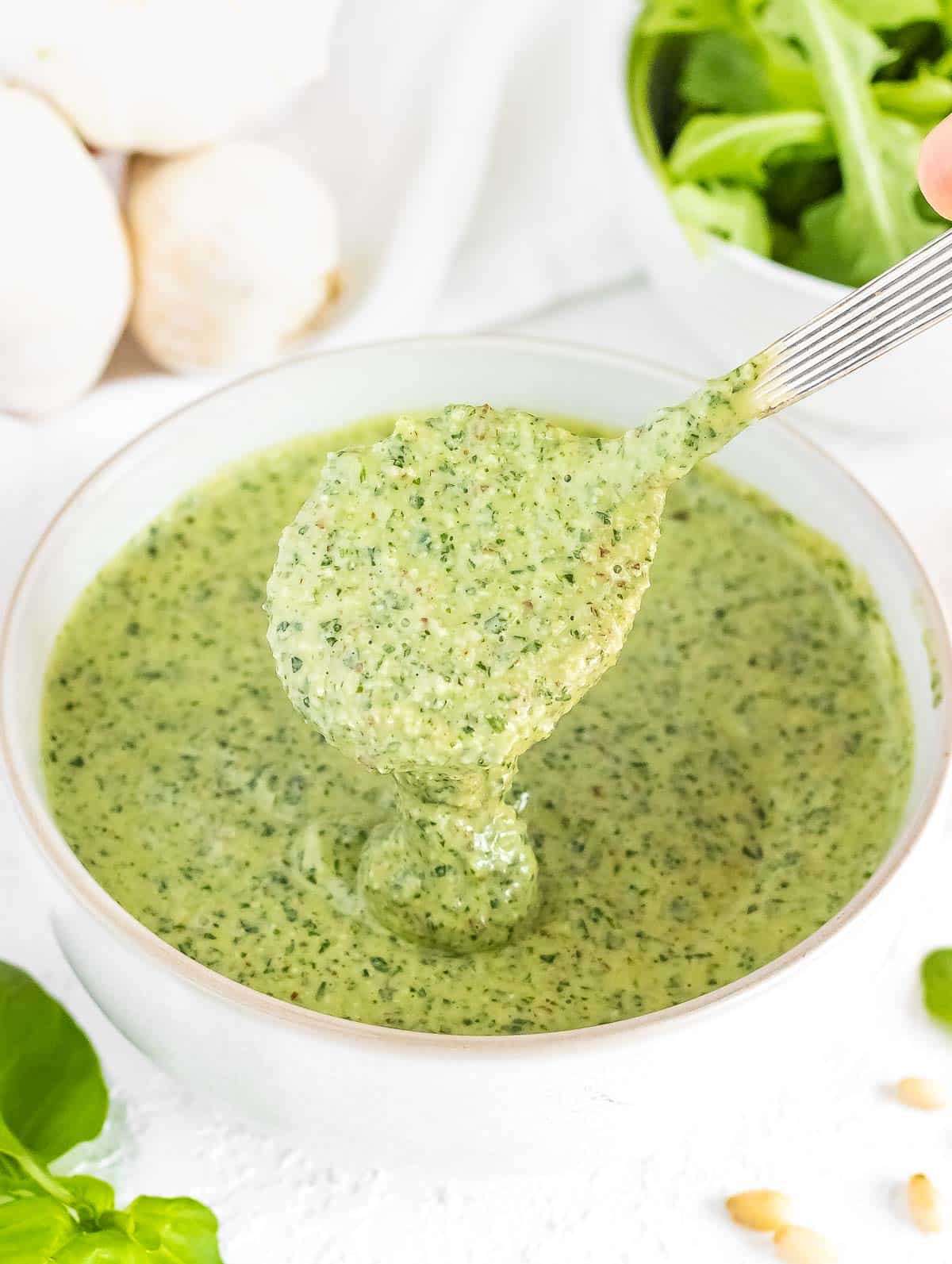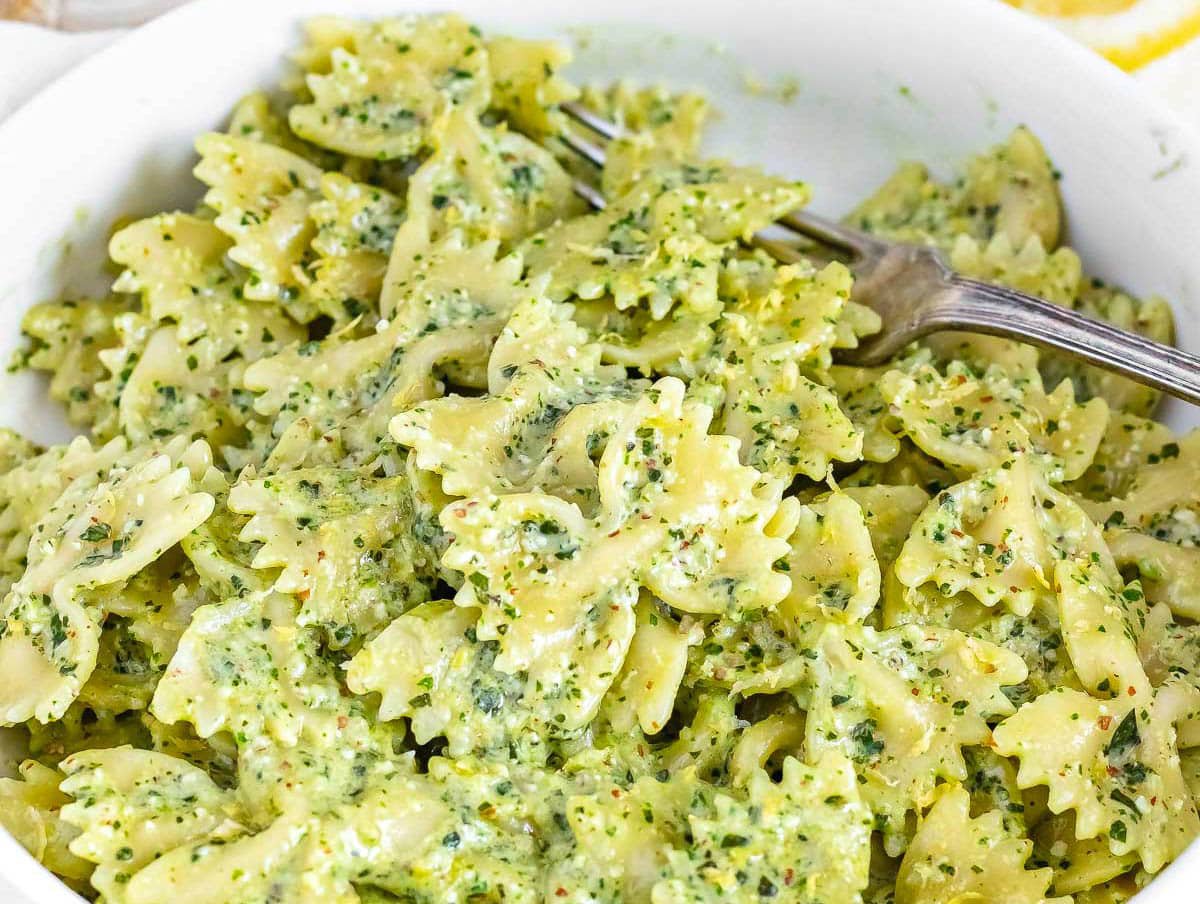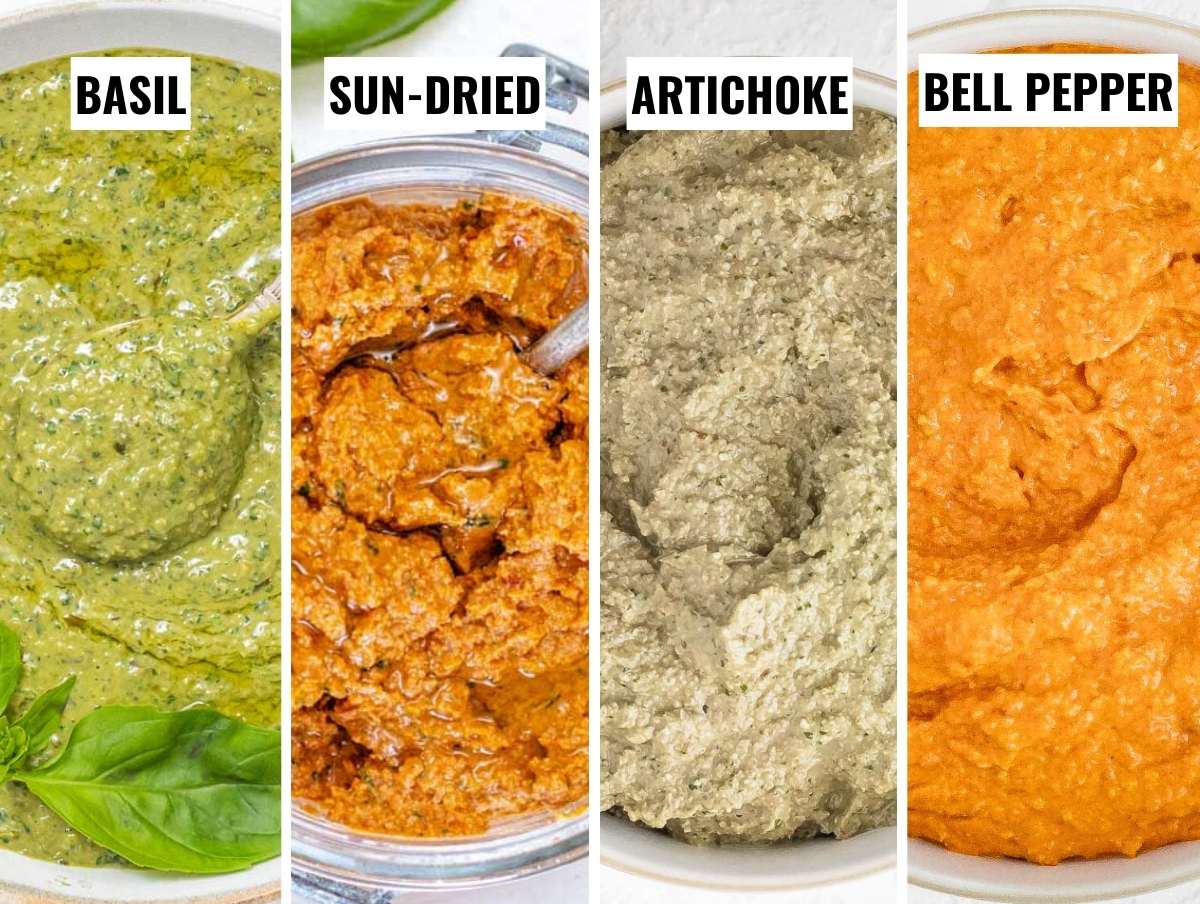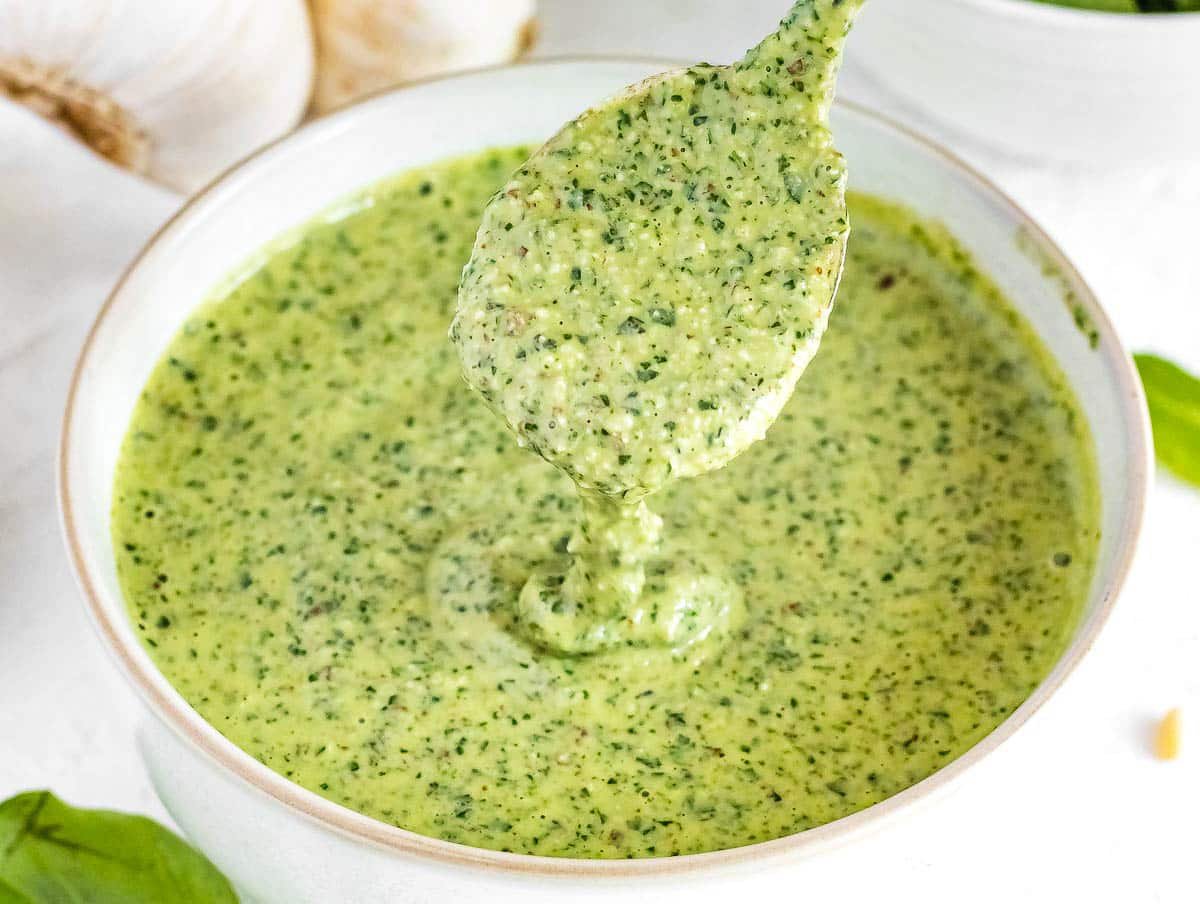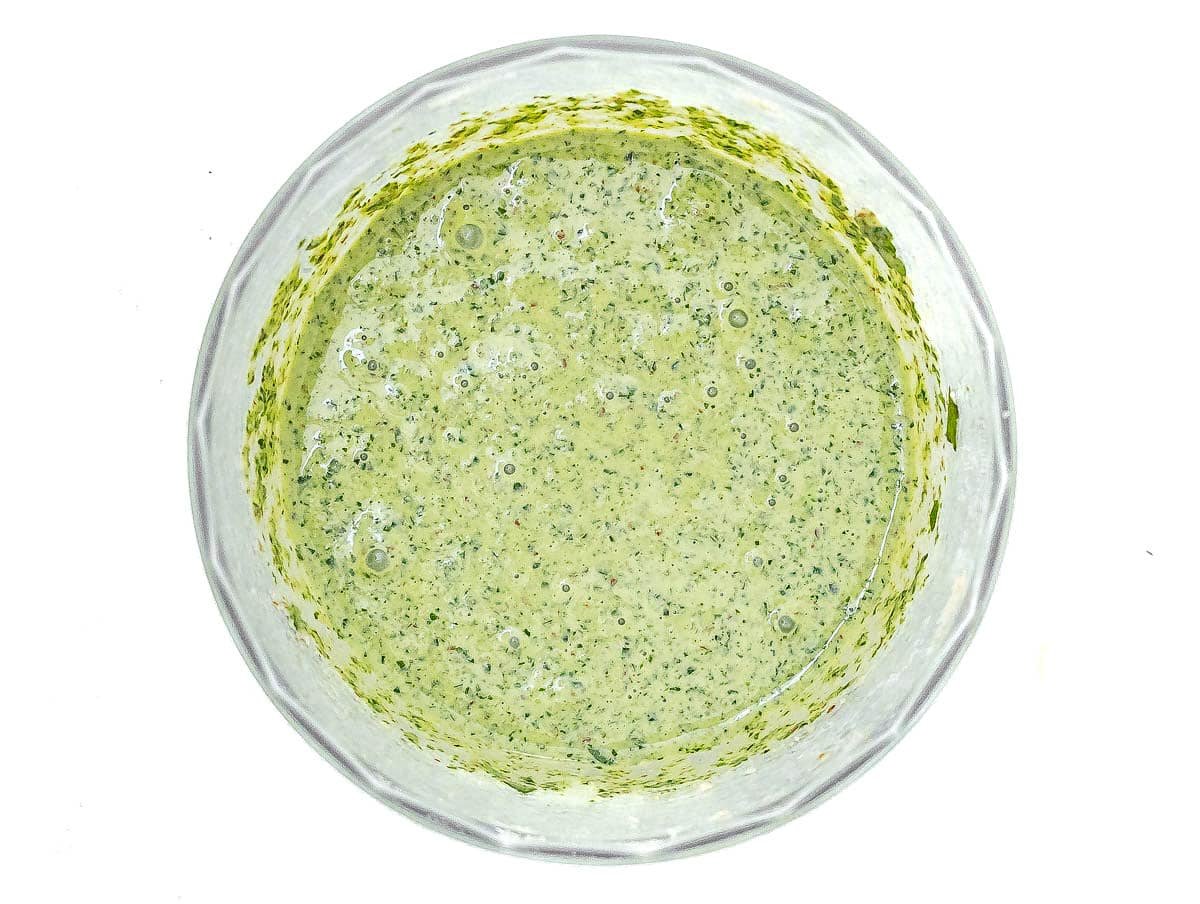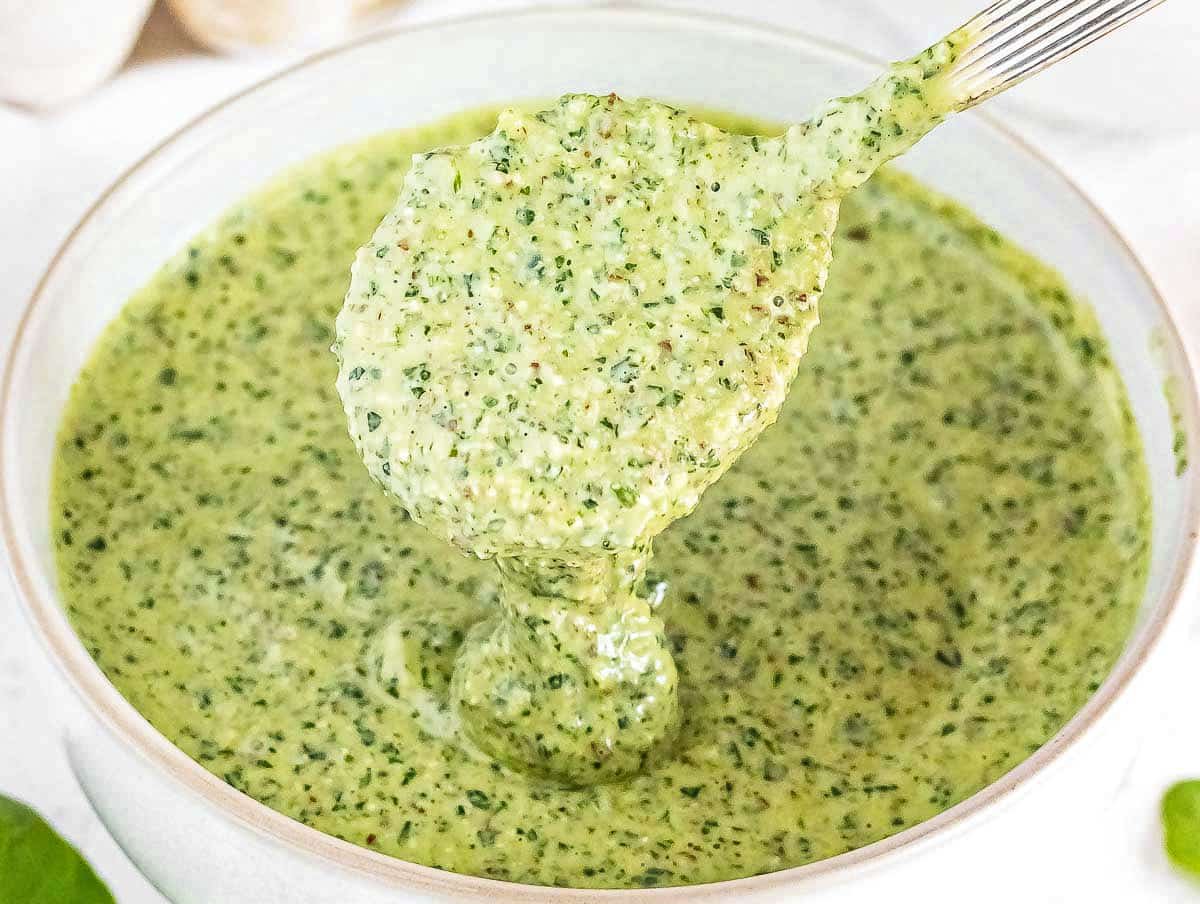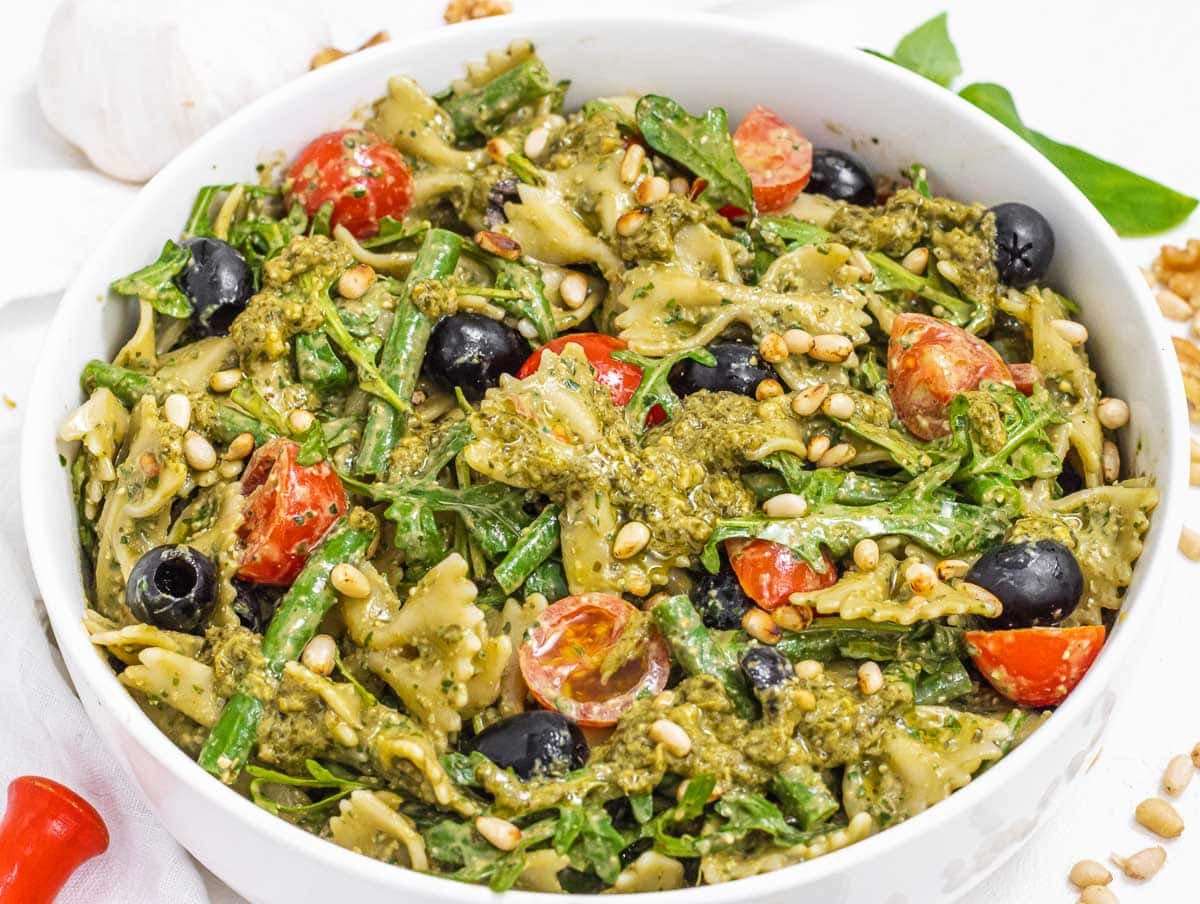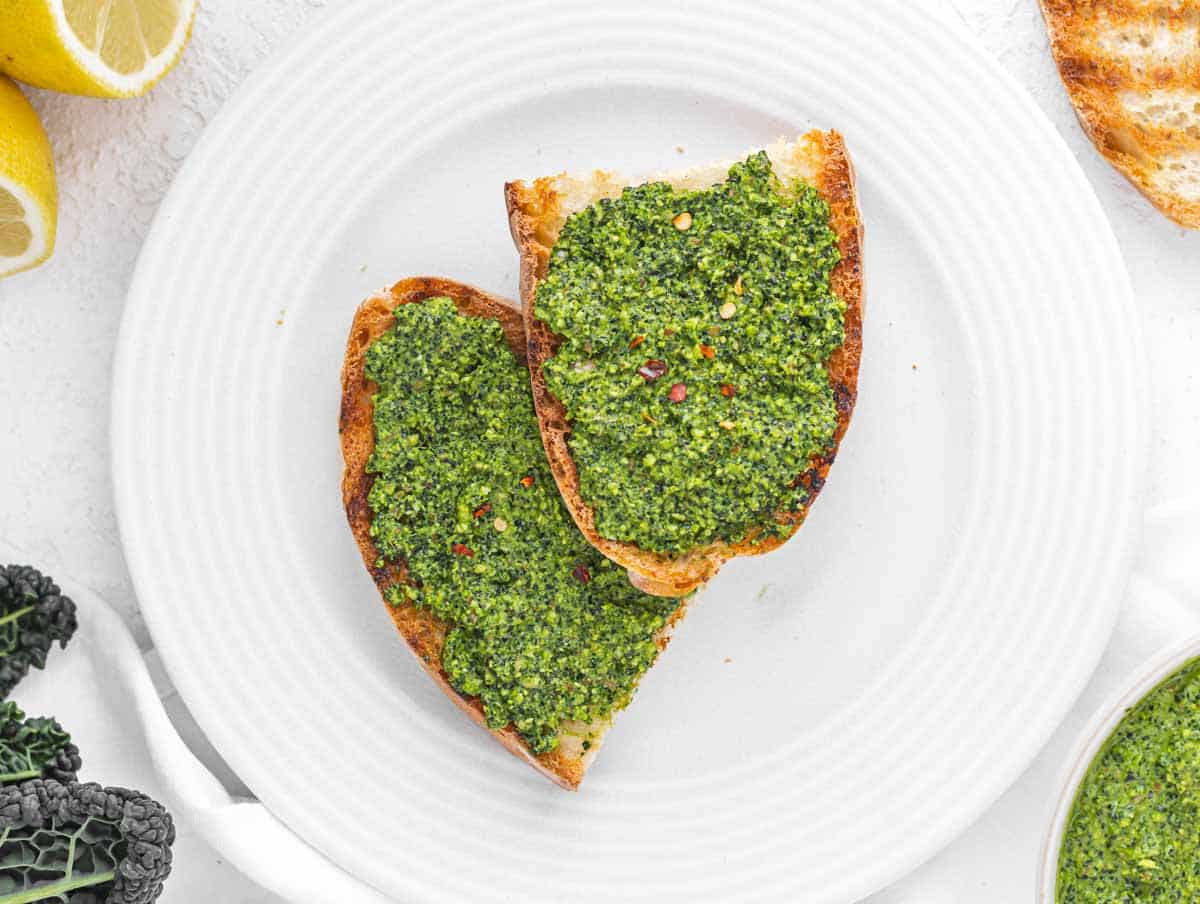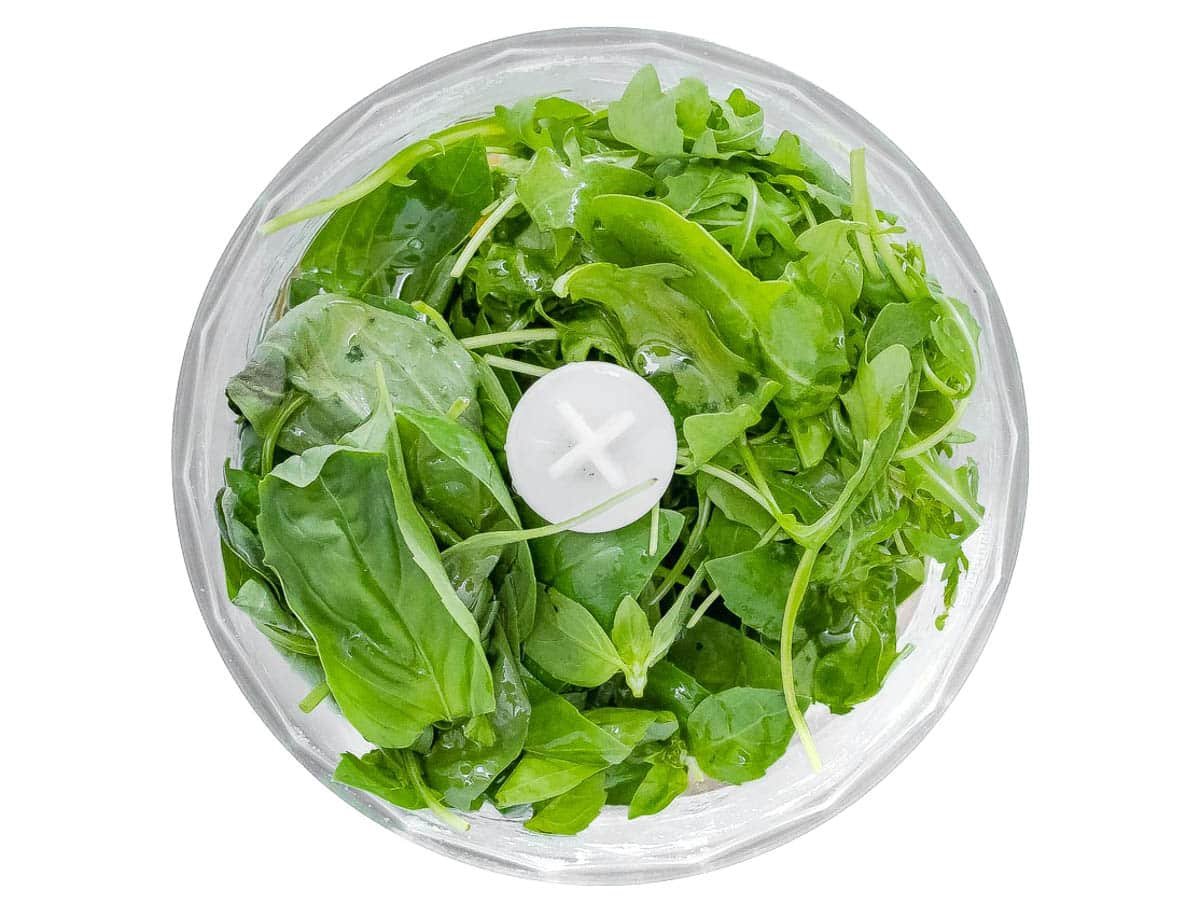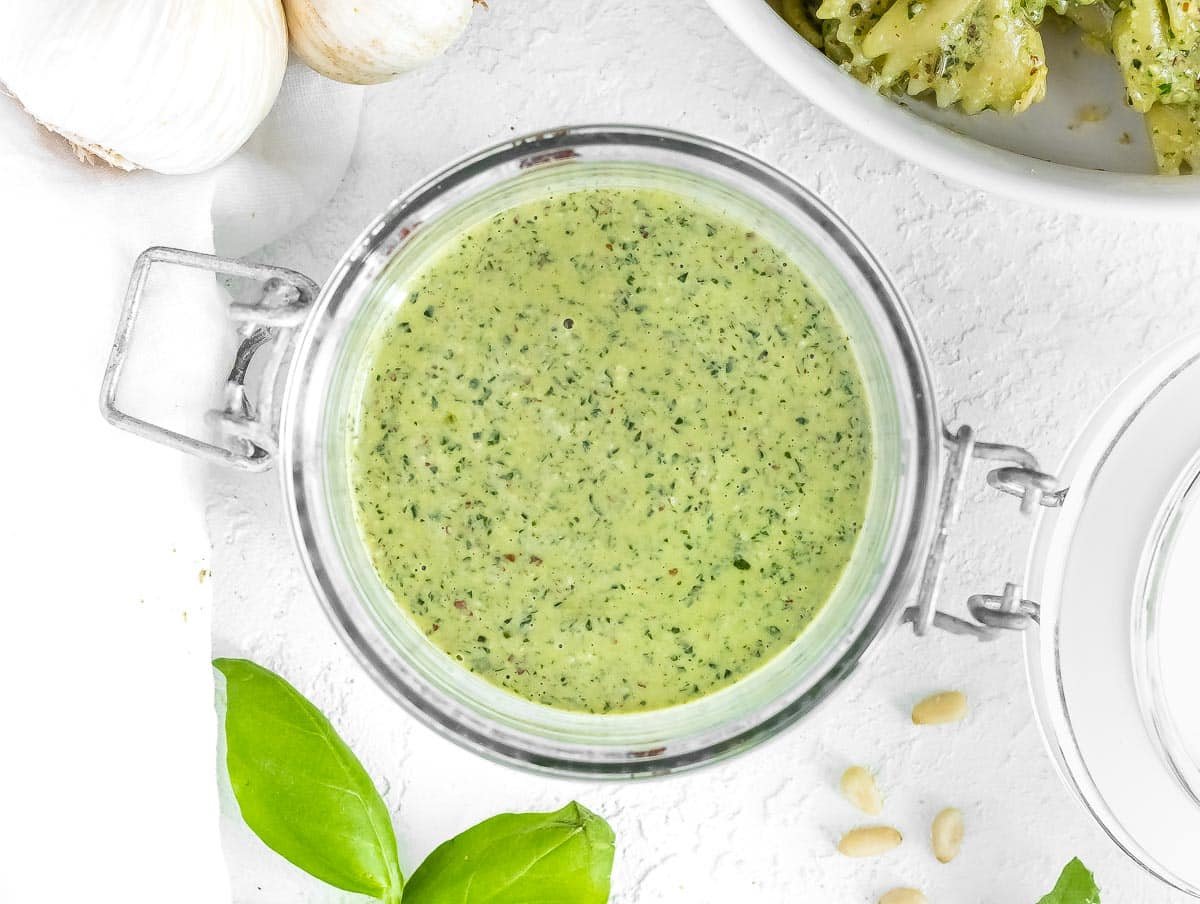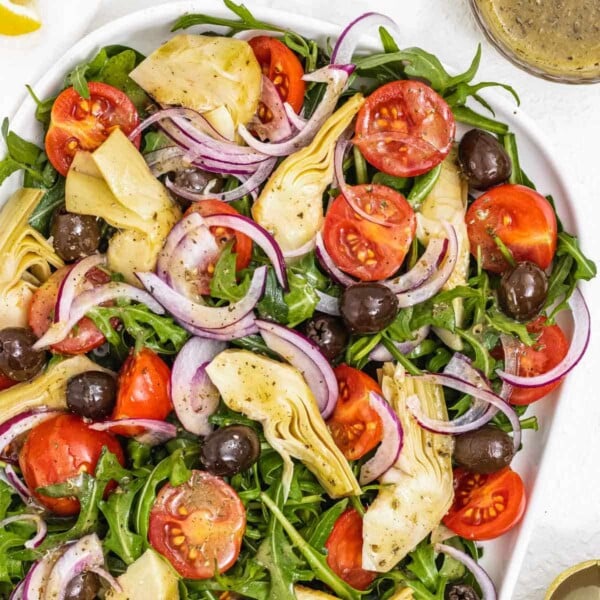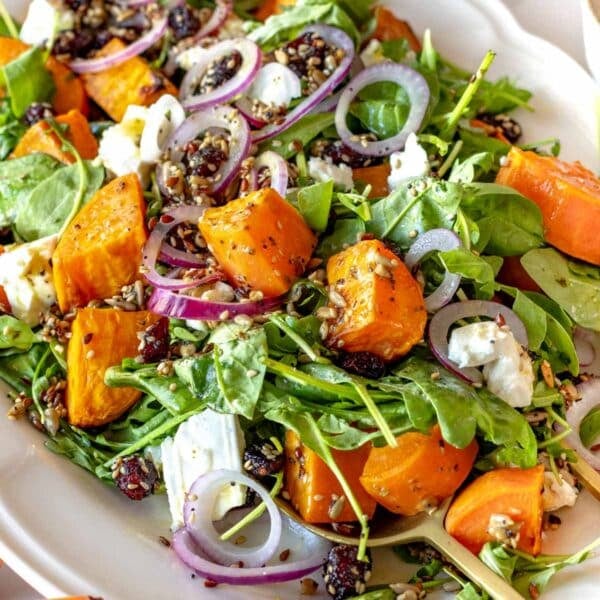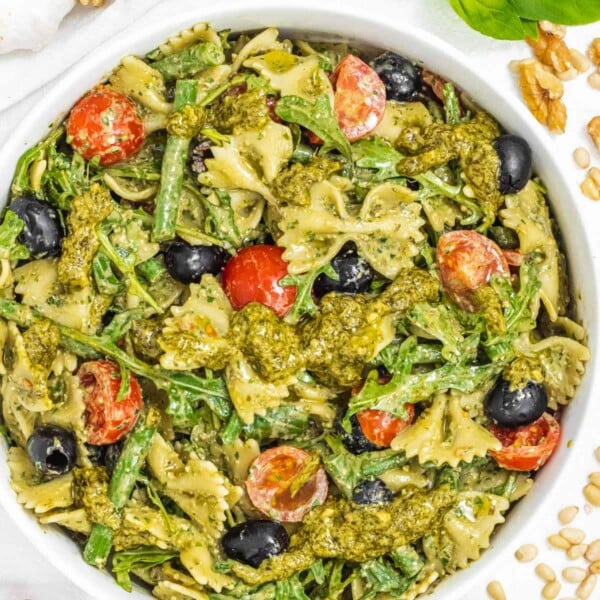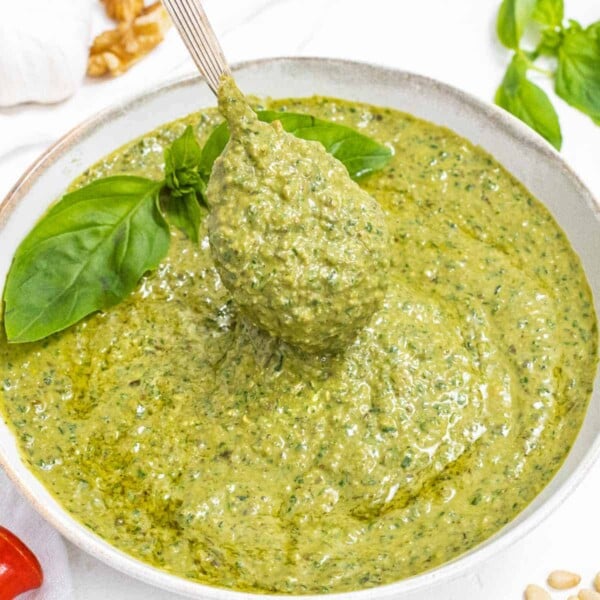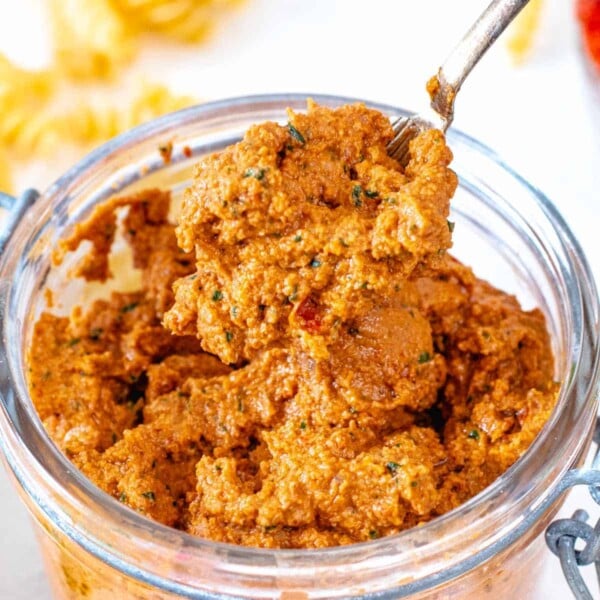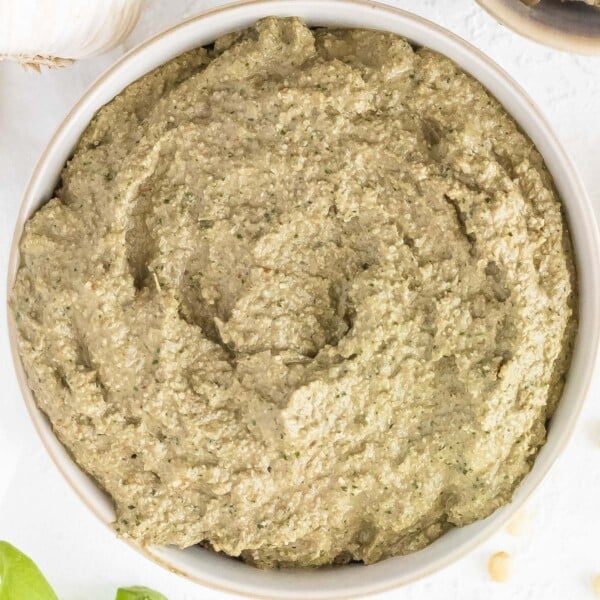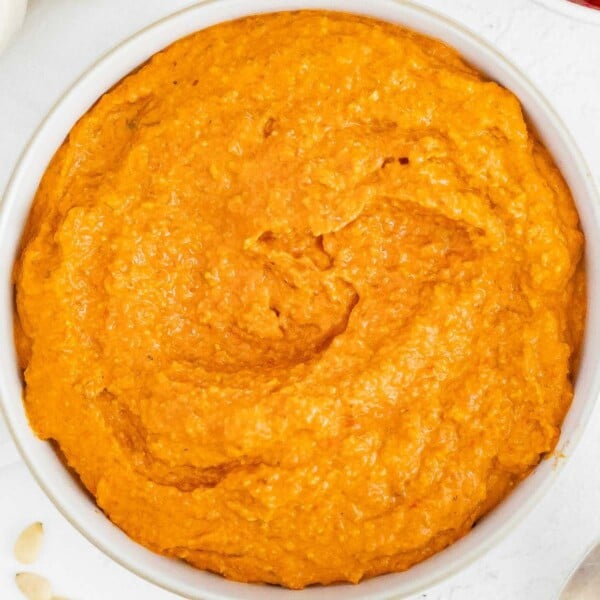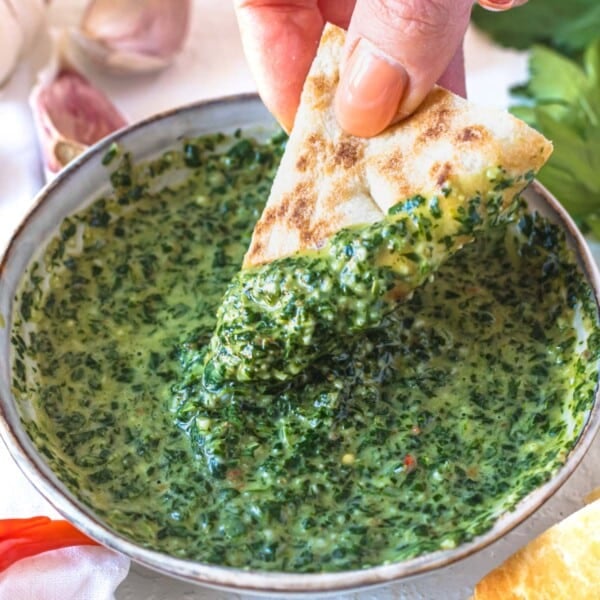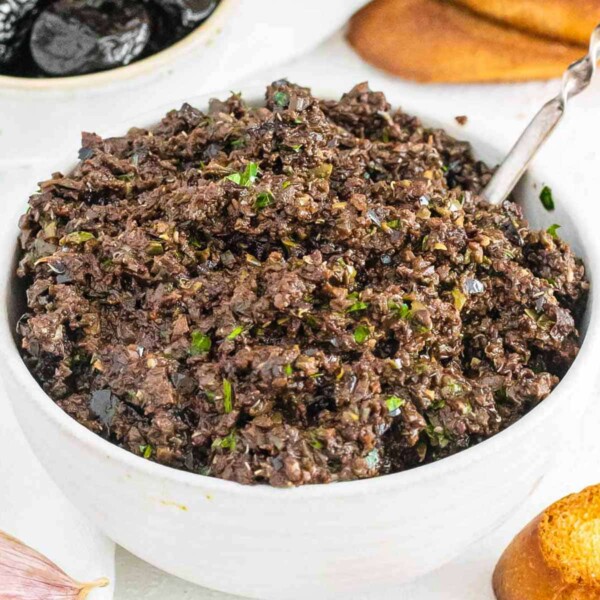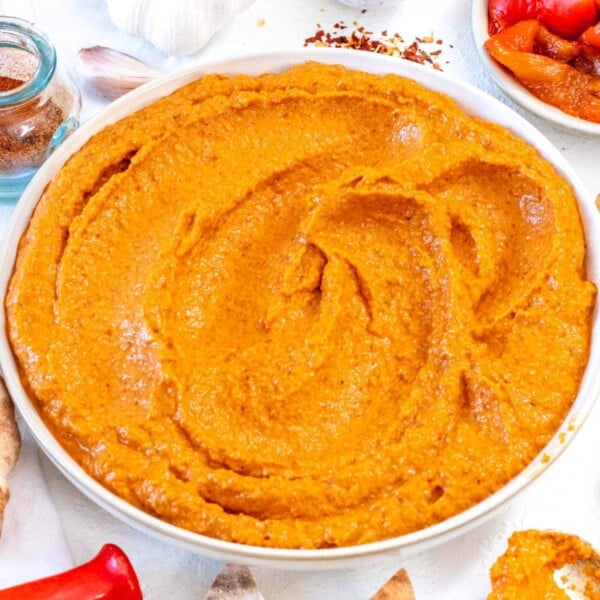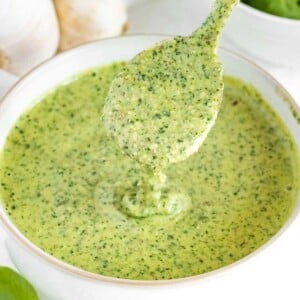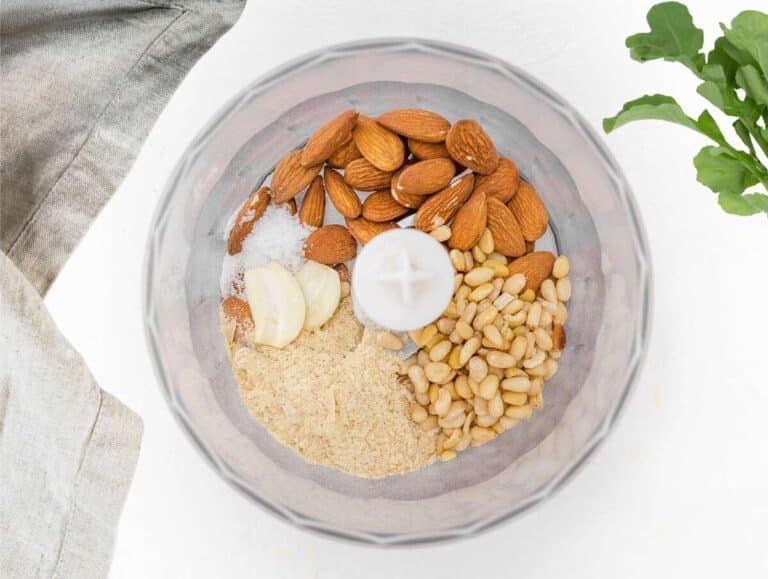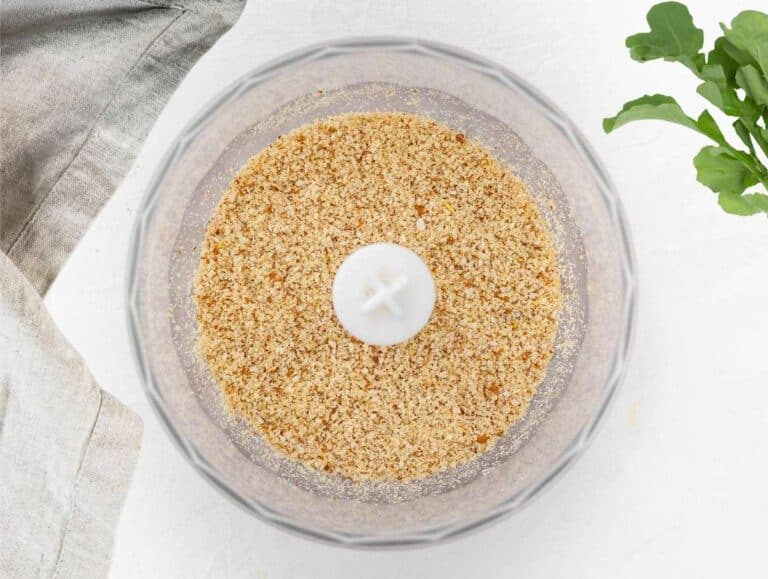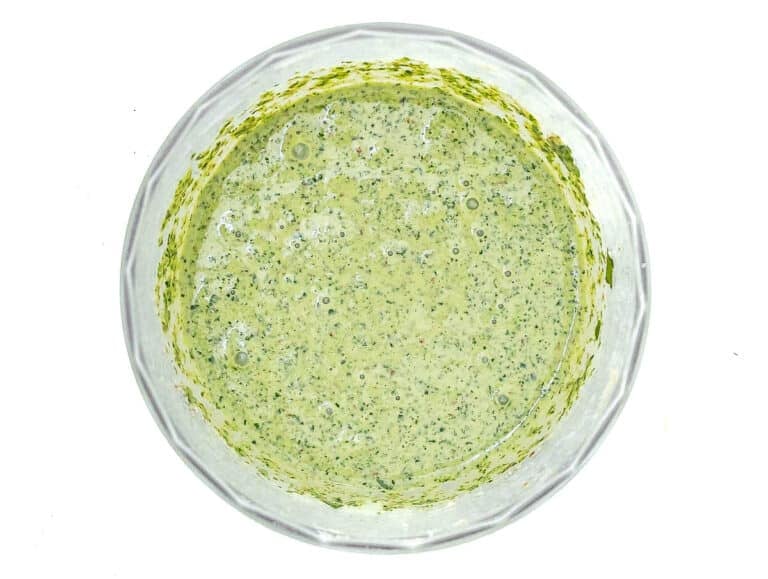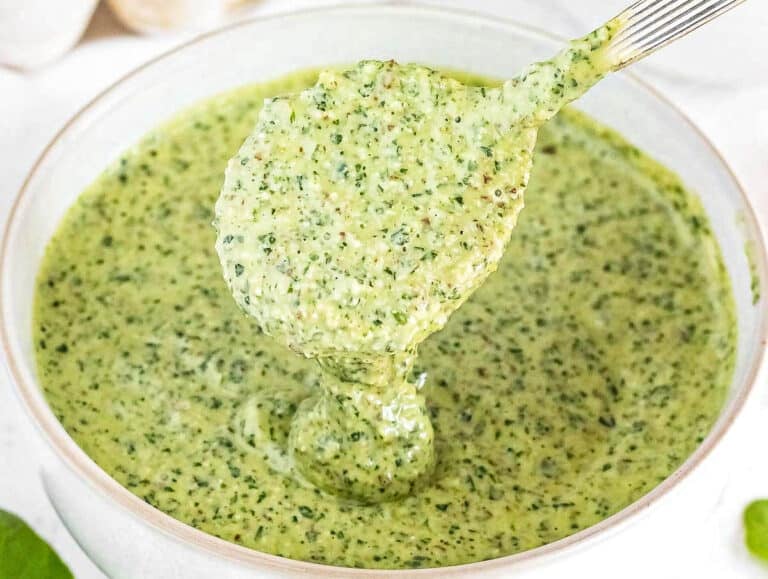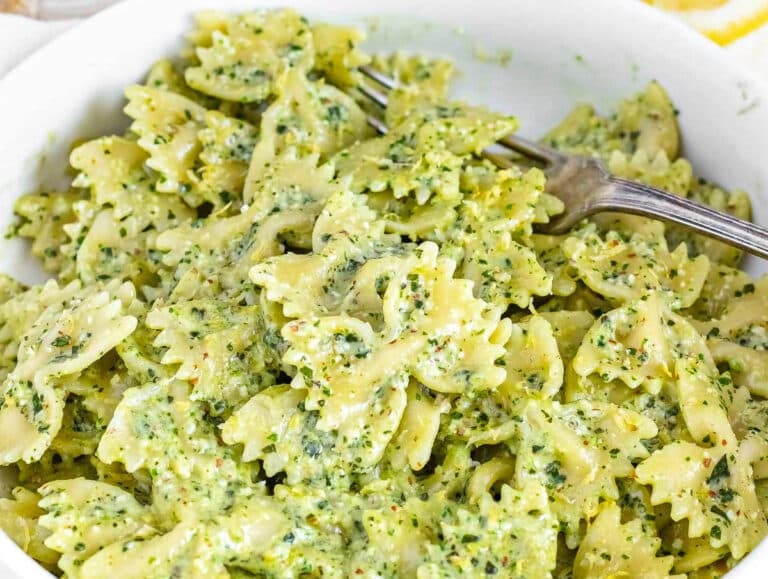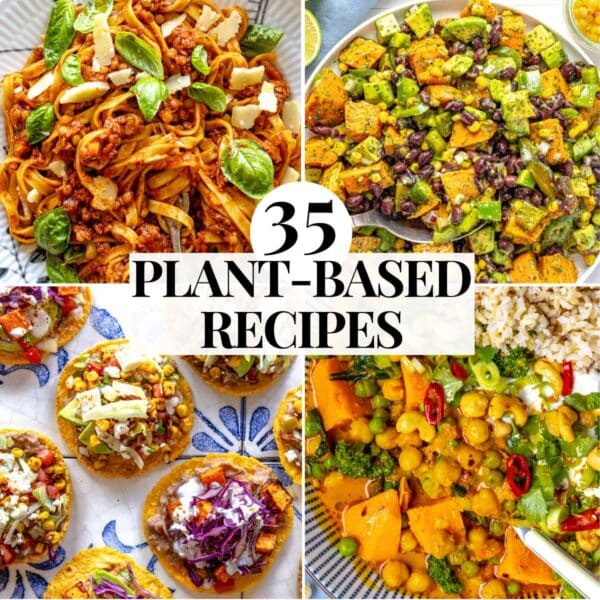The recipe is fresh and nutritious. You can make it with or without parmesan cheese; it only takes 5 minutes in a food processor. Dietary Note: this recipe is suitable for a vegetarian, vegan, and gluten-free diet.Don’t have time to read the full blog post? JUMP TO RECIPE HERE!
What is arugula pesto?
Ingredients and substitutions for arugula pesto
How to make arugula pesto
Arugula pesto serving suggestions
Variations
Arugula pesto recipe with no nuts
Questions
Storage & make ahead
More arugula recipes
Depending on the season and ingredients you have, you can make all sorts of pestos. There are pestos for every season! Arugula is available all year round, but we usually make this recipe during spring or early fall, when arugula is at its best. In autumn, you’ve got to try our creamy chestnut pesto with hazelnuts or a simple, nutritious spinach pesto. In winter, treat yourself with bold, rich, sun-dried tomato pesto or Louise’s favorite kale pesto. As spring comes, you can start using those fresh aromatic herbs. Basil pesto is the most popular, but you’ll also love creamy and nutty artichoke pesto or fresh and herby parsley pesto. In the summer, a light and refreshing zucchini pesto is probably the best choice, but if you are into bolder, umami-rich flavors, then roasted red pepper pesto is the recipe for you. The best part is that you can customize your pesto to your taste and dietary preference. Here, for instance, we’ll show you how to make a creamy arugula pesto with and without dairy. Pesto generally includes parmesan cheese to add flavor and substance. If you prefer to make a pesto without dairy, though, it’s no problem. Substitute your favorite nuts, such as almonds or walnuts, and a couple of tablespoons of nutritional yeast for the parmesan and your set. Also, traditionally, mortar and pestle are used to make pesto. But here, we recommend using a food processor to speed things up.
Arugula
Try to get fresh arugula, with small leaves if possible, and when in season. It’ll be less bitter. Tip: taste your arugula before making the pesto. If it’s bitter, consider combining it with fresh basil leaves, baby spinach, or fresh herbs like parsley to soften its sharpness.
Garlic
Fresh garlic is best. Add more or less garlic based on your preference. Remember that the raw garlic flavor strengthens as you store your pesto in the refrigerator, so you might want to add a little less than you think. You can also make arugula pesto without garlic.
Nuts
You can use most nuts to make arugula pesto. We mainly used pine nuts in the past, but since they are getting prohibitively expensive, we now mix them with more affordable nuts such as almonds and walnuts. Other nuts that work well in arugula pesto are cashew and macadamia nuts.
Parmesan or Nutritional Yeast
Use grated parmesan cheese for a more traditional pesto flavor. Substitute nutritional yeast for parmesan to make a dairy-free arugula pesto. Nutritional yeast is an umami-rich flavor enhancer and condiment made with deactivated yeast flakes. It’s often used in vegan recipes to add a mild cheesy flavor. It would be a lie to compare it to real parmesan, but it does an excellent job in this recipe, and we are happy to recommend it.
Extra virgin olive oil
Substitute regular olive oil for extra virgin.
Ice-cold water
To help preserve the bright green color of the fresh arugula and reduce the amount of oil. Substitute olive oil for water.
Salt
If you use parmesan cheese, you’ll need much less salt. If you use nutritional yeast, you’ll need to add more salt. Always taste and adjust for salt as you blend the pesto. The best salt for this recipe is sea salt or kosher salt.
Lemon juice (optional)
Lemon juice is optional. It adds a fresh and acidic twist; if you like that, you should add it. Optionally, you can pair this pesto with some grated lemon zest, added at the end on top, for instance, if you are serving it with pasta. To a small food processor or blender, add chopped garlic, pine nuts, almonds, nutritional yeast (or parmesan cheese), and salt. Blend for about 1 minute or until you get a finely coarse texture. Rinse the arugula and shake the excess water off. Add arugula leaves, extra virgin olive oil, and ice-cold water to the same blender. Tip: at this stage, you can add a squeeze of fresh lemon juice. if you like. Pulse a few times until the arugula is fully incorporated with the other ingredients. You might have to scrape down the sides of the food processor once or twice. Taste and adjust for salt. If you prefer a thinner pesto, add more oil or water. To serve pesto with pasta, add it to a large bowl and stir it with a couple of tablespoons of cooking pasta water until it’s saucy. Add the pasta and toss until creamy. You can add more pasta cooking water if the pesto is too thick and an extra sprinkle of grated parmesan or vegan cheese. Tip: Avoid heating the arugula pesto on a pan. The direct heat will spoil the freshness and the color of the pesto.
Arugula pesto for a cold pasta salad
Pesto pasta salad is a delicious way of enjoying a freshly homemade pesto. The recipe linked here is a pasta salad with basil pesto, but you can easily substitute arugula pesto for it. Check out our pesto pasta salad recipe.
Arugula pesto as a spread or dip
Pesto is also excellent as:
A spread in a sandwich. A spread on bruschetta or crostini. Drizzled on flatbread pizza or homemade focaccia. As a dip for baked tofu or air fryer tofu. As a dip or drizzle for roasted eggplant, roasted zucchini, roasted cauliflower, and other roasted vegetables. Drizzled on grilled zucchini and grilled eggplant. As a dip for roasted potatoes or air fryer potatoes.
Here’s a recipe you can use:
Arugula: 2 cups or 50 grams. Extra virgin olive oil: 1/3 cup or 75 grams. Grated parmesan cheese: 1/4 cup or 25 grams. Grated pecorino Romano: 1/4 cup or 25 grams (sub more parmesan). Garlic: 1/2 clove. Salt: to taste.
Arugula pesto recipe with walnuts
Arugula pesto with walnuts is delicious and easy to make. Swap walnuts for the almonds and pinenuts listed in the recipe box below. That’s it!
Arugula pesto recipe with basil
You can add basil to our arugula pesto recipe to soften the bitterness of arugula. To do so, use half basil and half arugula and you’ll get a delicious and perfectly balanced arugula basil pesto. Refrigerator: Store arugula pesto in a mason jar or another airtight container. Cover it with a thin layer of olive oil, close the container, and store it in the fridge for up to 5 days. Freezer: Transfer the pesto into a freezer-friendly container and freeze for up to 3 months. You can also transfer it into ice cube trays and freeze it in smaller portions. Thaw: Defrosting arugula pesto depends on how you want to use it. To use it with pasta, you must add the frozen pesto to a bowl and melt it with 1/2 cup of hot pasta cooking water.To use it as a spread, on pizza, or to drizzle on veggies, thaw it in the refrigerator over several hours or overnight.
Pear Salad
Artichoke Salad
Sweet Potato Salad
Pesto Pasta Salad
Vegan Pesto
Sun-Dried Tomato Pesto
Artichoke Pesto
Red Pepper Pesto
Chermoula
Olive Tapenade
Romesco Sauce
Tzatziki
25 Easy Sauces
30 High Protein Vegetarian Meals
30 High Protein Vegan Meals
35 Plant-based Recipes
